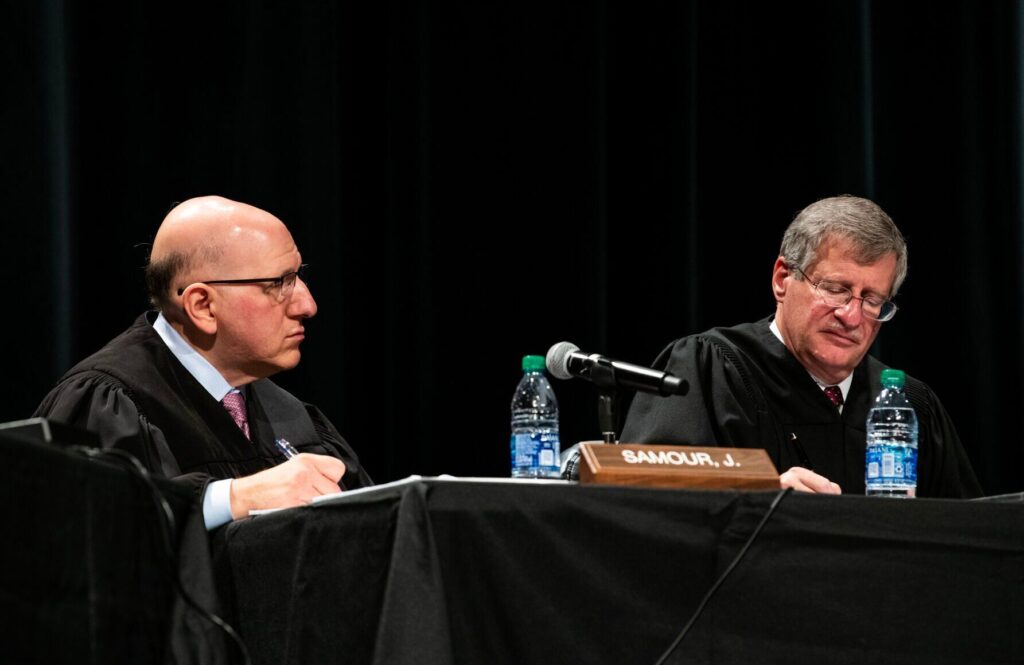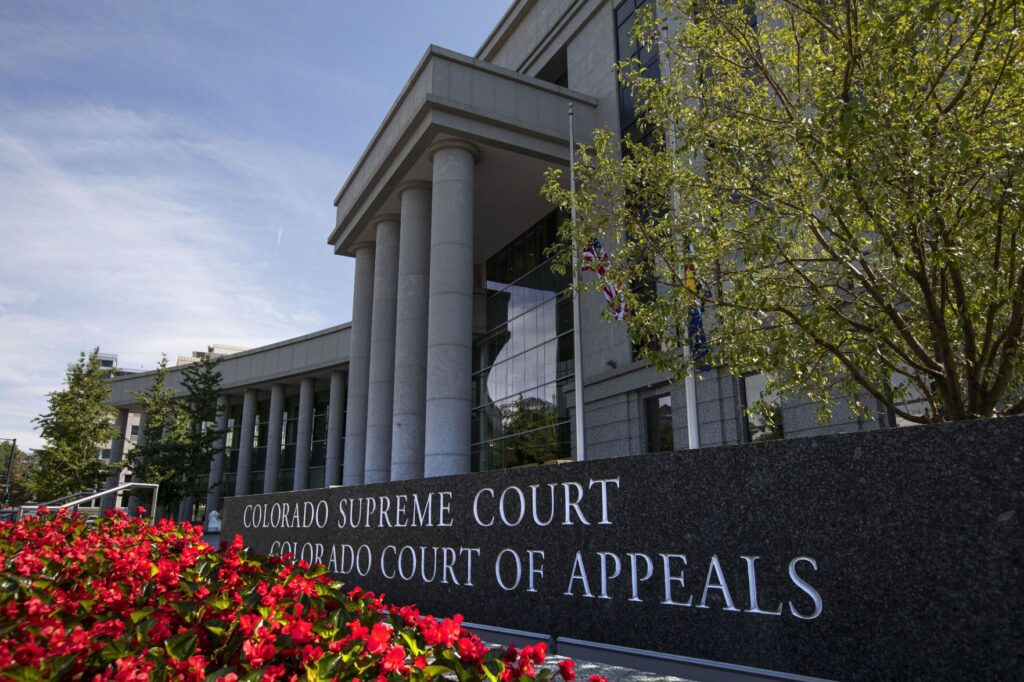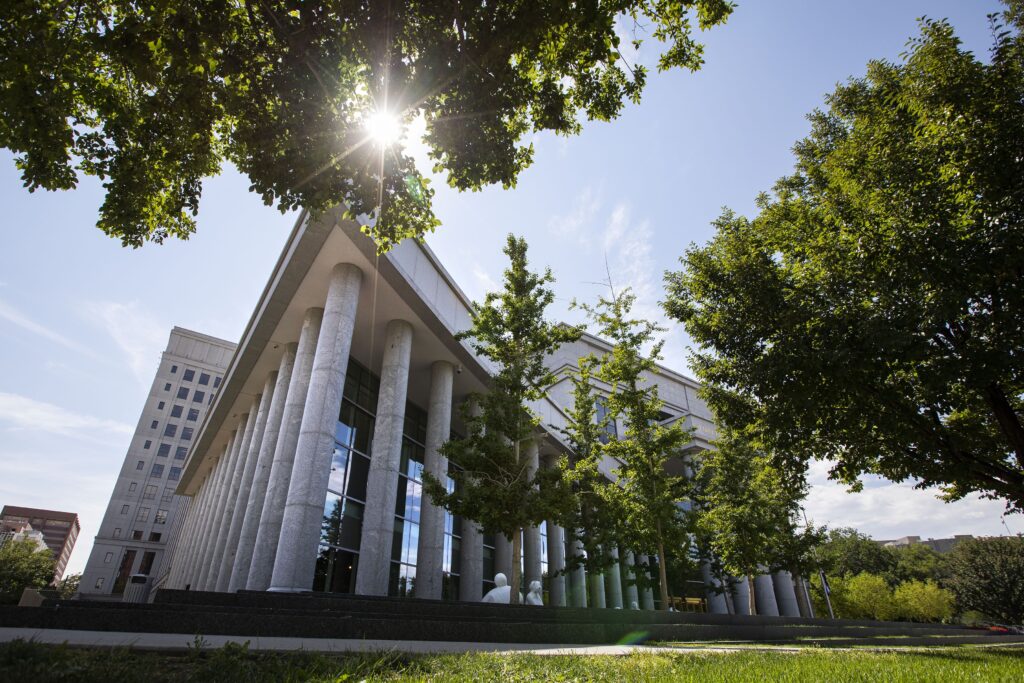Federal judges’ backlog holds steady on Colorado’s district court
As of Sept. 30, Colorado’s federal trial judges collectively had 73 motions in civil cases that had been sitting on their dockets for at least six months without a ruling.
The Civil Justice Reform Act of 1990 requires public reporting of motions awaiting action in civil matters assigned to each district judge and magistrate judge. Twice a year, on March 31 and Sept. 30, a report is generated of all motions pending for six months or longer. The law’s goal was to increase accountability for federal judges and ensure backlogged cases were moving forward.
The past several reporting periods have shown a major improvement for Colorado’s U.S. District Court judges. For the period ending Sept. 30, 2023, there were 235 motions pending. Six months later, the number had dropped substantially, to only 70 motions as of March 31, 2024.
Now, according to the data released on Monday, the motions backlog is virtually unchanged, with 73 motions appearing on judges’ six-month lists as of Sept. 30.
Historically, Judge Daniel D. Domenico topped the list with the largest number of undecided motions, but he had none pending this time. Senior Judges William J. Martínez and Raymond P. Moore continued to experience delays relative to their peers, but their backlogs were smaller than they were 12 months prior.
Judge S. Kato Crews moved to the top of the list, with 27 undecided motions across 12 cases.

When enacting the Civil Justice Reform Act, then-U.S. Sen. Joe Biden, D-Del., incorporated a provision requiring the Administrative Office of the U.S. Courts to release a public list of each trial judge’s pending motions semi-annually. Under the reporting protocols, a motion becomes “pending” 30 days after its filing. Judges also have the opportunity to give a reason for the delay, such as “complexity of case,” “extensive discovery involved” or “voluminous” materials.
The act does not apply to criminal cases, which have their own legal deadlines.
The motions on the six-month list range from dismissal and summary judgment requests, which can potentially end a case without a trial, to evidentiary and procedural matters. As of the last reporting period, all outstanding motions belonged to district judges, with the magistrate judges being caught up on their workloads.
Behind the raw numbers reported, there are nuances surrounding many of the motions.
For example, Judge Charlotte N. Sweeney’s six-month list displayed one motion to dismiss filed in December 2022 in a civil rights case. As of Sept. 30 she still had not ruled. However, she could not issue a ruling because a related order in the case was on appeal to the federal circuit court and is now pending before the U.S. Supreme Court — meaning the litigation remains on pause.
The longest-lingering motion on the list belonged to Senior Judge Lewis T. Babcock, a November 2022 motion to dismiss in a retirement plan dispute. Since then, the parties have asked numerous times for Babcock to keep the case on ice while they discuss settlement options. Last month, the litigants again asked that the proceedings remain paused through Jan. 31.
Crews, who has the highest number of pending motions, is the newest district judge, having been appointed in January 2024. Before that, he spent several years as a magistrate judge, where his six-month motions list rarely rose into double-digits.
Crews inherited his longest-pending motion — a motion to dismiss in a medical malpractice case — when he joined the district bench. The motion was filed in May 2023 and a magistrate judge issued her recommendation in December 2023. The parties filed their responses to the recommendation days before the case was assigned to Crews.
As of Wednesday, the motion remains unresolved. Crews, when recording the motion on his six-month list, cited his “heavy criminal and civil caseload” as the reason for the delayed ruling.

U.S. Magistrate Judge S. Kato Crews testifies at his confirmation hearing to be a district court judge on March 22, 2023.
Previously, Colorado Politics reported that Domenico’s longstanding backlog, which reached triple digits, dropped significantly as of the March 31, 2024 reporting period. Before the reporting deadline, the court transferred two of Domenico’s cases to Judge Timothy M. Tymkovich, who sits on the U.S. Court of Appeals for the 10th Circuit. There were motions in the cases lingering for 1,306 days and 1,550 days beyond the six-month window, which Tymkovich quickly resolved after taking over.
Around that time, the court also transferred another of Domenico’s cases to Babcock without explanation. Weeks beforehand, the plaintiff’s lawyer filed a motion pointing out Domenico inherited the case in mid-2019 when he was appointed to the bench, and there was a fresh motion to dismiss awaiting action.

Daniel Domenico.
“More than four years have passed since this Motion was ripe for a decision, and with the continued passage of time, the ability of the parties to properly prepare their case through testimony of individuals who may no longer be available, is negatively affected,” wrote attorney Nathan Davidovich in September 2023. “For a decision on a Motion to Dismiss to not be forthcoming after a four-year period, is contrary to the spirit of that rule and denies the parties the ‘speedy and inexpensive determination’ of the claims in this case.”
One month after taking the case from Domenico, Babcock ruled on the motion and broke the logjam. In October 2024, the parties reached a resolution and Babcock dismissed the lawsuit, 5.5 years after its filing. In explaining why he had one outstanding motion for the case on his Sept. 30 six-month list, Babcock noted it was “recently received from the calendar of another judge.”
The clerk of the district court, Jeffrey P. Colwell, said case reassignments are uncommon and typically occur when judges recuse themselves, when related lawsuits are reallocated onto the same judge’s docket or when semi-retired senior judges exercise their right to decline a case.
Colwell said the six-month list does not trigger case reassignments.
“Absolutely not. That does not happen,” he said.











